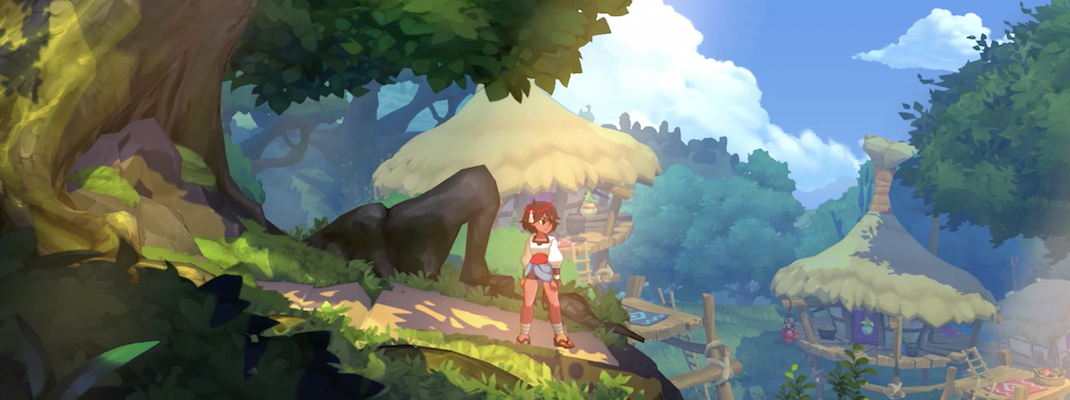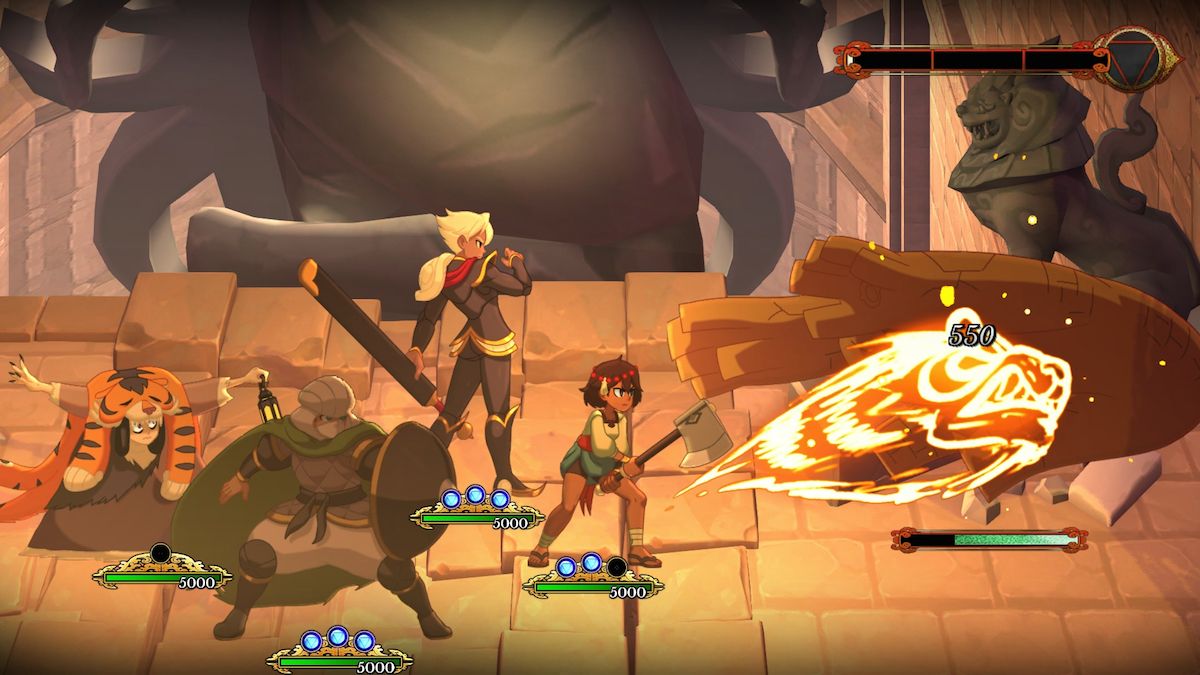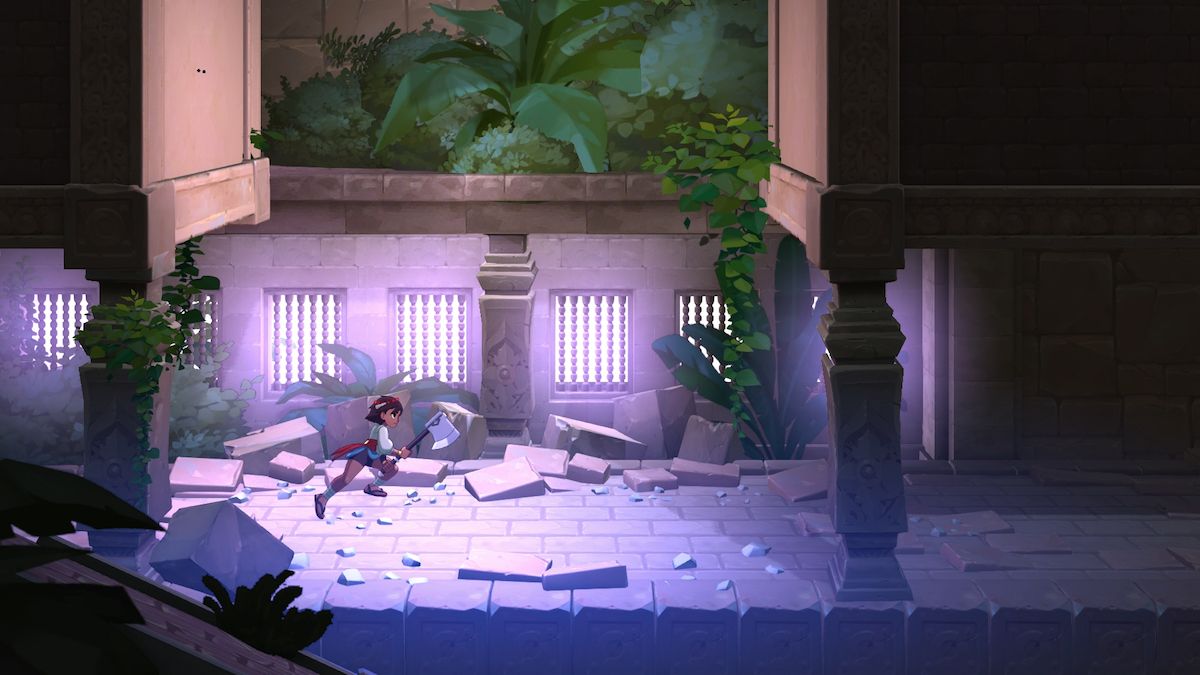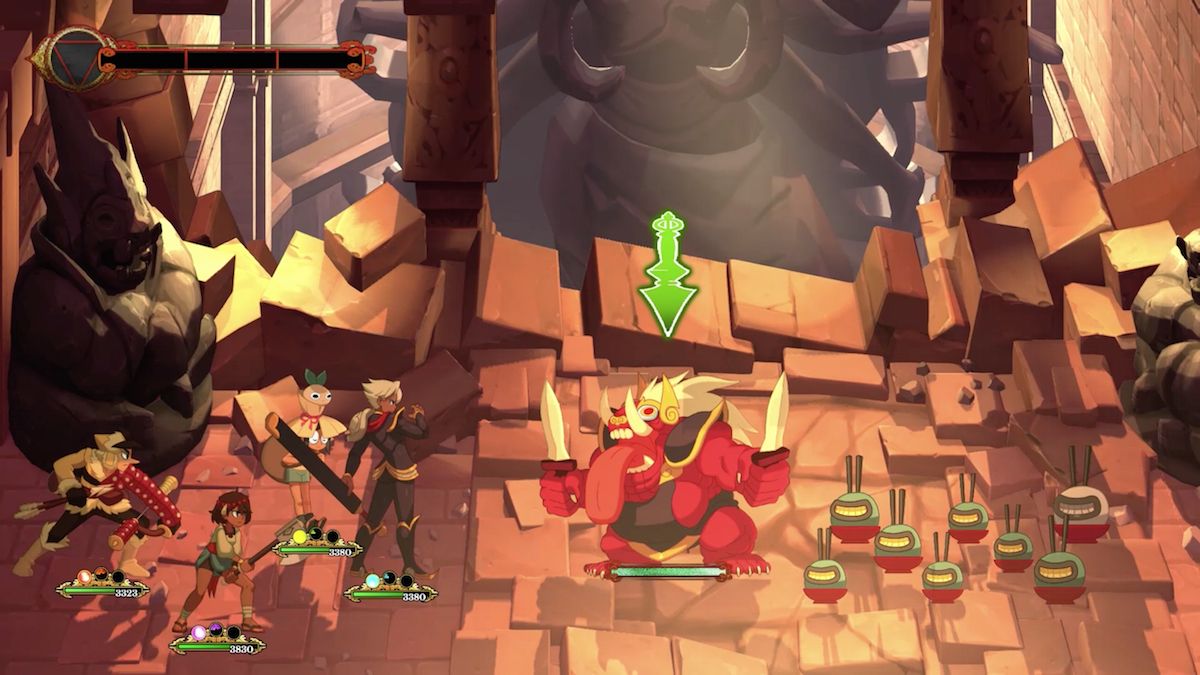Are we seeing a new wave of hybrid-styled games within the independent reaches of video games at present? It’s not a large list, but it’s significantly greater than what you’d find in the AAA market, right? The games catching our initial eyes as of late have been built on the idea of combining more than one standalone direction, visual or otherwise. The as-yet-untitled Project Octopath Traveller with its “HD-2D”-branded mix of 16-bit sprites and 3D environments; the as-yet-unplayable The Last Night’s Blade Runner-esque aesthetic playing host to its own pixelated character designs. And now Indivisible, Lab Zero’s own attempt at combining a hand-drawn animated flair to its 2.5D-borne platforming world. Indivisible has been one of the more distant spectacles from where I sit; for the record, it’s a project I have not personally backed and one I was modestly intrigued by, if not wholly fixated on prior to getting hands-on with the recently-distributed preview build sent out to backers and interested press alike.
But I’m pleased to report that Lab Zero’s latest effort has both succeeded and even exceeded leaving but a good first impression. Yes, there still lies some unanswered questions. Debates on how far the studio will go in the actual carving-out of this supposedly culturally-inspired world that at the moment is confined to momentarily-pleasant backdrops and the ocassional obstruction to get past. A thirty minute surge through simple-to-grasp platforming segments and retracing steps — that some may mistakenly class as Metroidvania-esque but is preferably better described as pertaining more to a Megaman style of platforming. What of these red and blue glowing items one can find and collect that, for the sake of this build, are removed of any importance or relevance?
I digress, Indivisible’s main appeal is in its combat and how even the gameplay itself has managed to approach the idea of a hybrid system of a few RPG traditions, but deliver it in a way that is stylish and with considerate substance. While the developers may describe this as an action RPG, Indivisible doesn’t really commit itself to either or. There are elements of action-orientated, visceral flashes, as there are the feel of turn-based strategies…but to denote Indivisible as belonging to one or the other would likely undermine everything else going on, hence why the gameplay leaves such a resounding impression to begin with. Such is the oddly-interesting middle-ground Indivisible pits itself amidst, there are flashes of early Tales games, Bravely Default, Child of Light, hell I had recollects of some of Supergiant’s work at points, but it’s a testament to what Lab Zero have, thus far, crafted in its combat. That permeating of unconventional RPG mechanics that underscores how intriguing and thus enjoyable Indivisible’s core gameplay turns out.
The basic structure of any battle is this: taking the lead of main protagonist Ajna, you can equip up to three additional party members which you map to one of four face buttons (if using a controller, in this particular case a PS4 variant, that’s Square/Cross/Circle/Triangle) and can be immediately adjusted, even swapped out for additional party members you gather later on, outside of combat. Inside combat, your party’s standing and positioning on-screen will correlate to which button they’re mapped to. While this may sound basic, like a lot of Indivisible’s mechanics, there’s a cleverly-subtle advising of planning and undertaking various forms of strategy if you want to keep your party members alive. Especially when later, more brutish foes, can strike more than one character, even if looks like they’re targeting a solitary member. Where it is you place, for example, your go-to healer, tank or in fact Ajna herself (whose HP, or lack thereof, determines whether you get a game over or not) can have a lasting impact on how the battle fairs.
In terms of actual combat, characters’ actions are determined by a visible allotting of orbs that indicate how many actions you can perform. Perhaps this is where the Bravely Default comparison comes in more prominently; standing idly will refill these orbs but in doing so may allow the enemy to attack at a unknowing time. Indeed, there’s a kind of free-for-all vibe that permeates these battles but it’s the emphasis on strategy and tactical placement that gives the seemingly chaotic nature of its presentation, some worthwhile meaning. Do you sit back and wait for your party members’ three orbs to fill so you can dish out a potential forty-hit combo and relegate an enemy to such a powerless, afflicted position? Do you rush in at every opportunity to keep foes at bay? Do you patiently wait to fill up your special meter that, when activated, will allow a character to pull off a special offensive/defensive move (anything from healing your whole party, to unleashing a heavy/strong attack, even buffing your next healing move when you decide to use it).
At first, the ample micro-management of button prompts, differing attacks (leaning the analog stick in different directions just as you press the character’s corresponding face button) and being quick to react to an enemy’s similarly-diverse assortment of threats, may perplex some and have others scrambling to simply button-mash, but the weight of Indivisible’s hidden traits slowly reveals itself to be a end product that is both accessible but what’s more, a lot of fun to watch unravel. Yet beyond the flashy, hand-drawn diversity with its animation — alongside composer Hiroki Kikuta’s bright-and-chirpy, N64/PS1-fond music -- though it may not be as distinct or as clear to point out, Indivisible does a really good job at providing both depth and [eventually] easy-to-grasp controls that just might prove critical when it comes to latter bosses and grander enemies. Enemies that share the protagonist’s eccentric designs and comical, 2D aesthetic.
Though in theory you probably could get away with merely spamming the face buttons at every opportunity — whittling down a foe’s health-bar slither by slither — there’s an immense joy at racking up damage combos and/or finishing it off with a three-tier special, not just because it looks good, but more importantly, it’s come by way of player strategy. Your strategy. Making good use of blocking whenever an indicator warns you of a coming enemy attack or deciding when best to use your allotted “moves” to prevent foes from coming at you. Granted there are some minor annoyances and elements mid-battle that [at present] don’t feel as finely tuned, namely the “grab” attacks that party members can’t simply defend against. Though they require perfect timing in order to parry, the window here is so short and, unfortunately, too varied between monsters, if there’s anything that perhaps needs looking at, it’s how such danger is indicated to the player, without obviously making it too easy to counter.
These minor irks are small enough not to put a dampener on the gameplay and while my playthrough was short — around thirty minutes to complete the preview build — consider me someone who’s been won over by Lab Zero’s proposition. It’ll be interesting to see where the team go and hopefully build upon when it comes to defining both the world and the characters that populate it. Here’s hoping we’ll see both the eccentrics of its character design and environments shine though, because as far as gameplay and RPG combat goes, Indivisible is showing significant promise. As a once neutral-surveyor such as myself, for a game to make one go "OOOOOH…OK!" you can pen Lab Zero’s latest onto the list of ones to watch for 2018.




